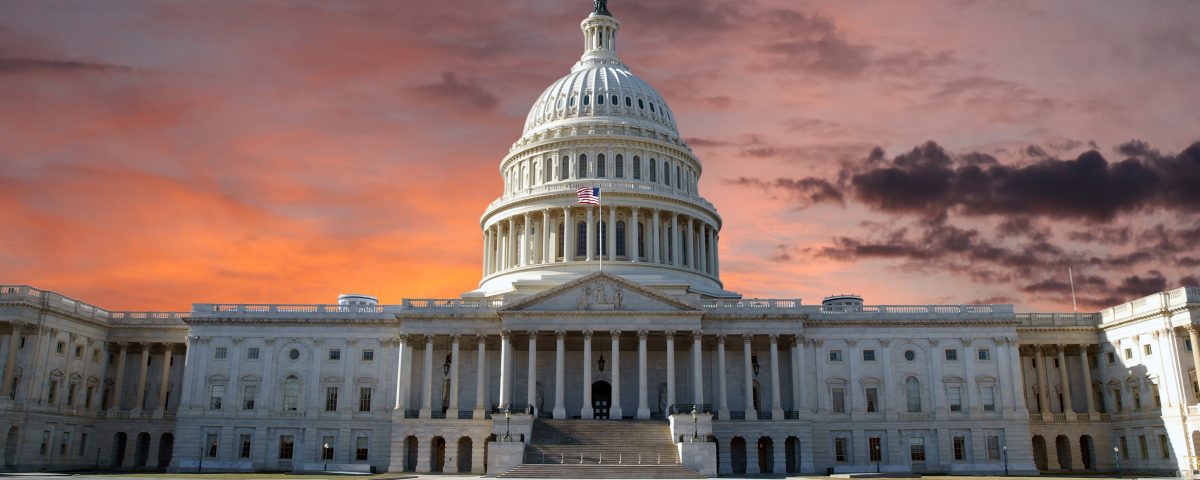The 4Ts – Trump, Tax, Trade and Technology – and Their Impact on the Fashion Industry.

Using Consumer Store-Bought Fabric for Commercial Purposes & The First Sale Doctrine
January 24, 2017
Seller’s Permit & Resale Certificate in California: Which One Do You Need?
February 11, 2017This is a special feature from our Washington D.C. based consultant, Hilary Jochmans.
The inauguration on January 20th, 2017, of Donald J. Trump as the 45th President of the United States, ushered in a new era that has people and industries across the country and around the globe wondering what this leadership change means for them.
What will a Trump presidency mean to the fashion industry? At first, it might appear the impact would be made by the new first lady and former model, Melania Trump. The designers favored by a first lady can receive enormous publicity and rocket to sartorial fame in the pages of local and national publications and in the tweets, insta posts and Facebook feeds of millions.
While this may be a boost to an individual designer, the real impact to the fashion industry as a whole will be made by the President himself through his actions taken at the Executive level and in conjunction with the Republican-controlled Congress. The areas most likely to be impacted are tax, trade and technology.
Tax:
In this very contentious political era, the need for tax reform is one of the few things the new Administration, as well as Congressional members from both sides of the aisle, agree needs to be accomplished. The US has the highest corporate tax rate in the industrialized world. While other countries have lowered it in recent years, the US has stayed firm at 35%, prompting some US Companies to move jobs overseas and deterring foreign companies from investing. The average corporate rate for most industrialized nations is 25%, and some countries have dramatically lower rates.
What this tax reform will look like is unclear. As with many things, the devil is often in the details, but in this case, it is also in the broader constructions of a plan.
During the campaign, Trump said he would reduce the corporate tax rate from 35% to 15%. While the details of tax plans are murky, certain elements are becoming clear. Congressional Republicans want to reduce the business tax rate to 20% for corporations, from the current 35%, and imports would be subject to a “border adjustment” tax. This will be impactful to the fashion industry. It is estimated that the US imports roughly 96% of its apparel. A high percentage of these items come from Mexico and China. Trump proposes a 20% tax on imports from Mexico, (ostensibly to pay for the border wall between the US and Mexico) and a 45% tariff on Chinese imports.
The president generally cannot act unilaterally on tax policy. Such changes would have to be part of Congressional action and not all Republicans in Congress are on board with this idea. As has been reported by Politico, US companies such as Target and Best Buy, who oppose these tax proposals, are voicing their strong opposition to Congress.
What will the impact be to the fashion industry of these tax provisions? Ultimately, who will bear these costs? Most likely, it will be the consumer. If products made overseas become more expensive due to the import tax, what are the consequences? Will corporations continue to manufacture overseas or will they bring production back on shore? Such a change could not be implemented quickly. The supply chain systems in place are set up months, if not years, in advance. Also, could companies find the resources – factory space, materials and workers –in the US to continue to manufacture their products? If certain countries are singled out for higher tax treatment, will other countries become viable options? Perhaps these other countries would not have in place the worker and factory safety standards that are finally being developed in places like Bangladesh.
As companies who manufacture overseas grapple with these questions, what will the impact be to companies that already produce items in America? The number of clothes and shoes made in the US has consistently increased over the past several years, although it is still a small percentage. Perhaps, items made in the US will now be comparatively lower in cost than their foreign made counterpart.
Trade:
Trade was another major topic of Trump’s campaign. He frequently derided existing trade deals and promised to halt new ones. Trump favors smaller bi-lateral deals with provisions for near-immediate termination for perceived unfair actions by the other country. He recently announced plans to conclude a bi-lateral trade deal with the UK.
Within days of taking office, President Trump officially removed the US from the Trans-Pacific Partnership. This major trade deal signed in February would have bound 12 signatories which comprise 40% of the world’s GDP: Australia, Brunei, Canada, Chile, Japan, Malaysia, Mexico, New Zealand, Peru, Singapore, US, and Vietnam.
Proponents of the trade deal cited the elimination of 18,000 taxes that various countries put on American goods which would have been a boon to American exports and boosted higher paid jobs at home. Additionally, advocates said the trade alliance would have been a counter to a rising China which was not party to the agreement. However, opponents, which consisted of an array of unions, environmental and public advocacy groups that typically resist global trade agreements, voiced concerns for protection of American jobs and environmental and labor protections.
The apparel industry was divided on TPP. Smaller outfitters were concerned it would have made overseas-made products even cheaper and more difficult to compete against. But, larger companies, which rely heavily on imported material, would be beneficiaries of this trade deal.
Included in TPP was a labor chapter which declared that all signatories should adopt and maintain labor rights, end child and forced labor, establish a minimum wage and have health and safety standards. It did not specify how to achieve any of these goals. Many felt this was insufficient. However, in the absence of a trade agreement, what protections are there for workers in the overseas factories?
Technology:
Technology is a broad topic that affects all industries and and aspects of our daily lives. For the fashion world, the impact can be felt particularly with wearable technology and data security.
During the waning days of his administration, President Obama released the findings of a 9-month study conducted by the White House Commission on Enhancing National Cyber Security. The Commission was tasked with developing actionable items for both the public and private sector. Many of these recommendations were in need of immediate action and the report called on the President-elect to begin implementation in the first 100 days of the new administration.
Of note to the fashion industry was the section on the Internet of Things (IOT). The oddly named, yet ubiquitous, IOT is the connectivity of devices to the internet and to other devices. The IOT is at the heart of wearable devices. It is estimated that by 2019, there will be 780 million wearables such as smart clothing and activity trackers.
The data collected by wearables has increased in volume and value. If the personal information gathered by the wearable device is not properly secured, it can be vulnerable to accidental or intentional loss. Companies can protect against these losses by ensuring wearable devices are designed with security in mind from the inception. The inherent risks with data include the access and misuse of personal information and attacks on the network or systems.
The National Retail Federation (NRF) has urged the new administration to take action concerning data security. Particularly, the organization urged a national standard for data breach standards, as opposed to the myriad of state laws which currently exist. In addition, they urge caution in creating data privacy laws concerning retailers use of customer information.
Trump’s views on this topic are not known. Despite the prevalence of stories on hacking during the campaign, candidate Trump made few statements on the underlying issue of cyber security other than to say that if elected he would direct the DOD to review US preparedness. Trump recently named former NYC Mayor Rudy Guliani as an informal cyber security advisor. The administration will solicit information from the private sector through a series of informal meetings on aspects of cyber security.
Trump and the Republican leadership hope to achieve many of their policy goals in the first 200 days of the new administration. It is not clear how solutions to these problems will be tailored. There are still more questions than answers. The only thing that is certain is that we are uncertain what’s next both substantively and stylistically.

